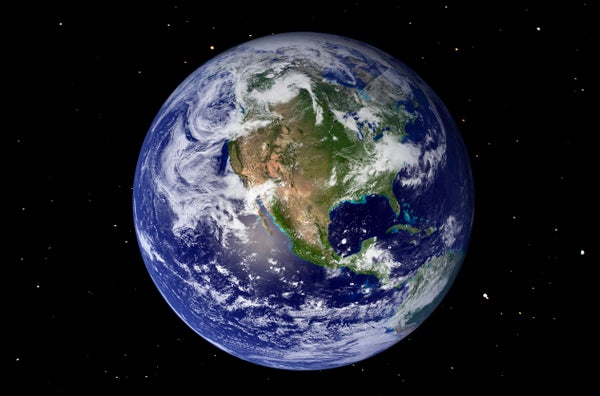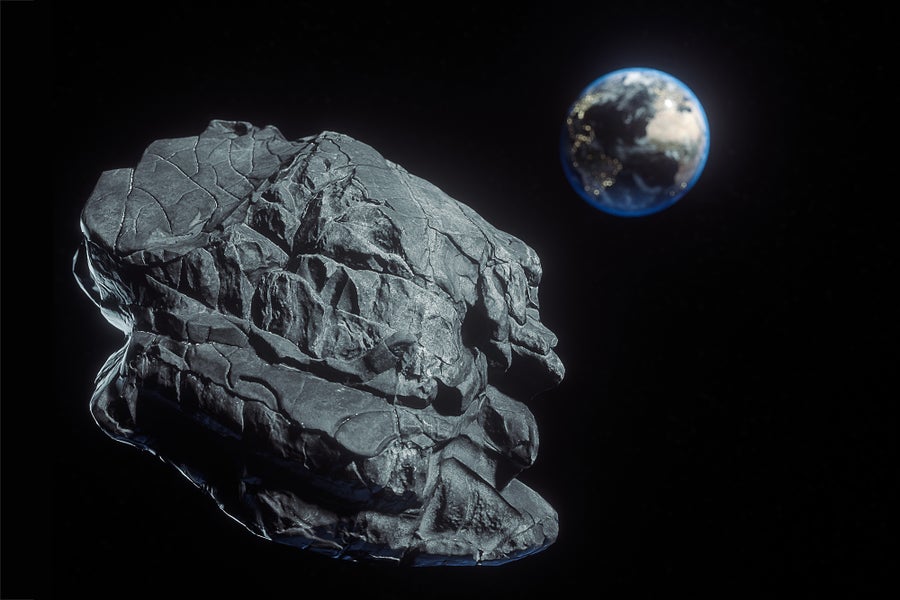December 9, 2024
3 min read
6 Wild Things We Learned about Earth in 2024
It’s been a fascinating year in earth science—from mysterious “dark oxygen” to an “unidentified seismic object,” here are some incredible things we’ve learned about our planet in 2024

Stocktrek Images/Getty Images
Modern humans have lived on Earth for more than 300,000 years, but we’re still discovering tons about this massive breathing rock we call home. From its deep 4.5-billion-year history to its current mysteries, here are six mind-blowing things we’ve learned about Earth in 2024.
Life-Giving Catastrophes
The news begins with an event that occurred 3.26 billion years ago, when a massive asteroid—some 50 to 200 times larger than the one that drove the nonavian dinosaurs extinct—slammed into the young Earth. This “S2 impact” devastated the planet and its early, simple life, new research shows. But it also triggered key changes that would allow organisms to eventually thrive, in particular by sending crucial nutrients into the ocean. Despite the apocalyptic nature of the impact, then, the bacteria that managed to survive might have ultimately become better off than they were before the collision.
On supporting science journalism
If you’re enjoying this article, consider supporting our award-winning journalism by subscribing. By purchasing a subscription you are helping to ensure the future of impactful stories about the discoveries and ideas shaping our world today.
Ancient Seafloor Found Suspended below Pacific Ocean
The Pacific Ocean is massive and hides some impressive secrets. One we learned about this year is a slab of seafloor dating back some 250 million years, shortly before the emergence of the earliest known dinosaurs. Researchers discovered the slab trapped some 410 to 660 kilometers below Earth’s surface. The ancient rock is slowly descending within a strange blob of Earth’s outer core that protrudes into the planet’s rocky mantle.
“Dark Oxygen” from the Seafloor
A favorite genre of scientific discovery is the one that begins with data so strange that researchers think something is wrong with their instruments. That’s what happened to a team studying oxygen levels on the seafloor in a region of the Pacific Ocean called the Clarion-Clipperton Zone. “I literally told my students, ‘Throw the sensors in the bin. They just do not work,’” said Andrew Sweetman, who studies seafloor ecology and biogeochemistry at the Scottish Association for Marine Science, in an interview with ScientificAmerican. It turns out the sensors were fine, and they alerted researchers to a strange process by which metallic deposits on the seabed produce mysterious “dark oxygen.”

Dickson Fjord before the landslide, in August 2023 (left), and after, in September 2023 (right). Photos of the mountain peak and glacier, taken from the fjord.
Søren Rysgaard (left); Danish Army (right) (CC BY-SA)
What Caused This “Unidentified Seismic Object”?
In September 2023 earthquake sensors around the world reported a strange, monotonous hum unlike any seismic signal ever before detected—and it lasted for nine days. Scientists classified the source of the hum as an “unidentified seismic object” and then set to work trying to identify it. Just this year they determined that the signal was caused by a massive landslide in Greenland’s Dickson Fjord. The landslide triggered a tsunami, followed by a seiche, or a wave that sloshed back and forth within the confined fjord for more than a week.
Earthquakes Forge Gold Nuggets
Large gold nuggets found in Earth’s crust puzzled geochemists, who understood how dissolved gold seeping into cracks in the mineral quartz could create small deposits but not how larger ones could come to be. New research, however, suggests that earthquakes might do the job via a phenomenon called the piezoelectric effect—by which certain materials can produce an electric charge when exposed to mechanical stress. Quartz is piezoelectric, so scientists tested whether forces similar to seismic waves could generate enough charge to make gold nanoparticles start to build up. Preliminary results suggest this effect is enough.

Aleksandra Malysheva/Getty Images
Earth Gains a Mini Moon
Earth’s moon is famous and rightfully so—it’s scientifically informative, and it’s stunning to boot. But despite what we learn in school, our planet may have several natural satellites at any given moment. For two months this autumn, a little 10-meter-wide asteroid known as 2024 PT5 became a “mini moon” after our planet’s gravity tugged it into a partial loop around Earth. And it turns out Earth also has a longer-term collection of half a dozen “quasi-satellites” that don’t actually orbit the planet but appear to. Friends!








Leave a Comment